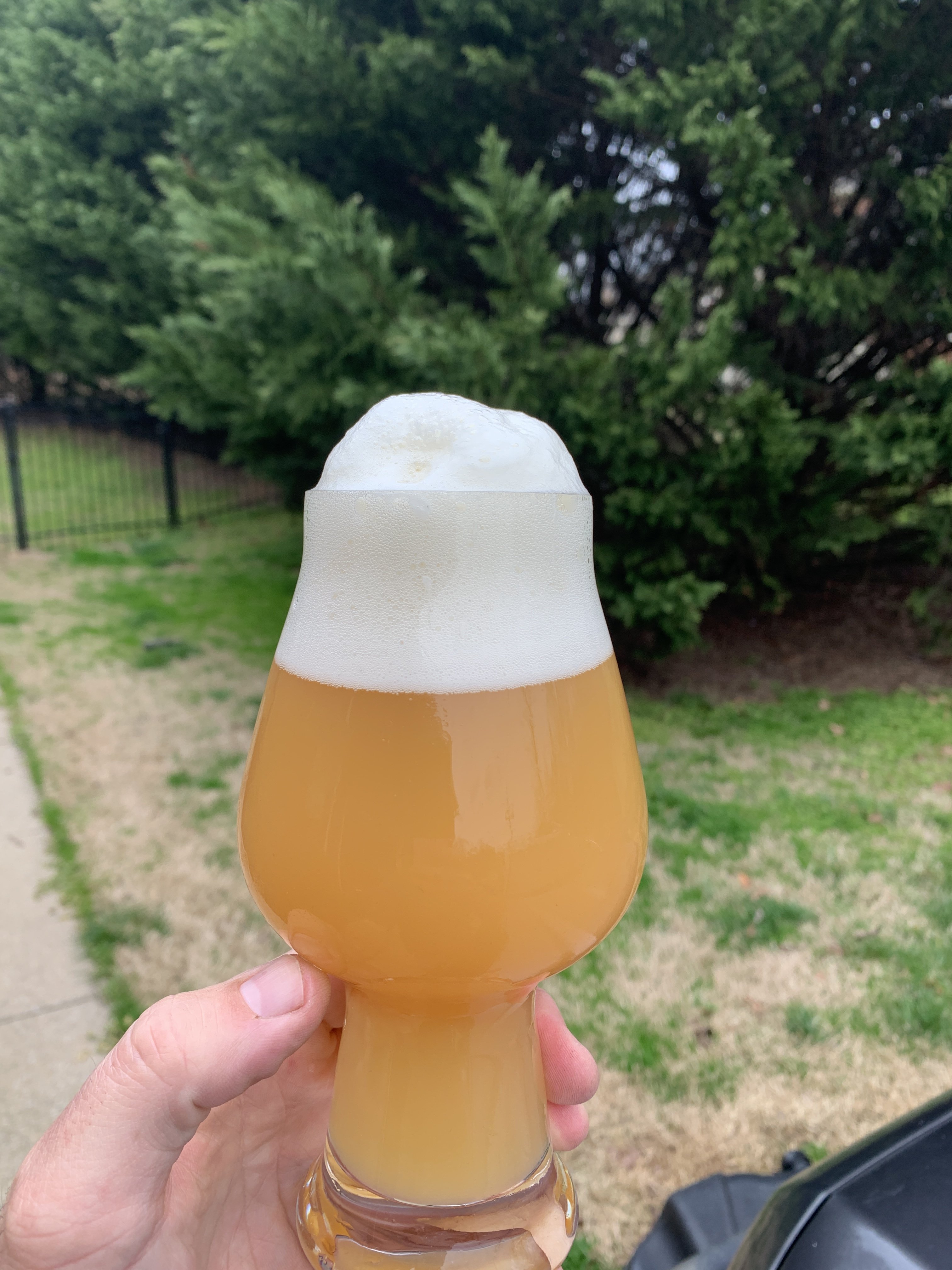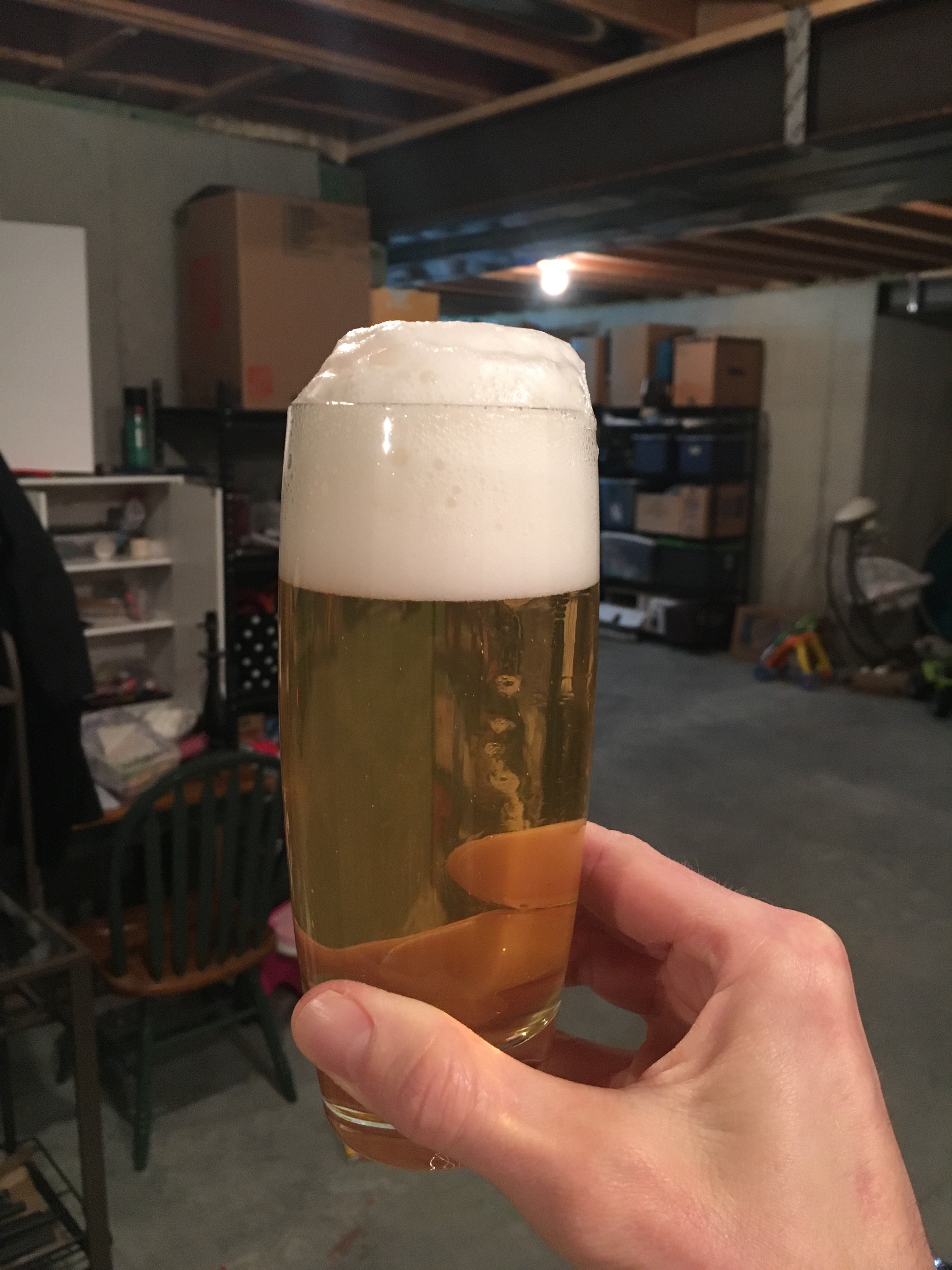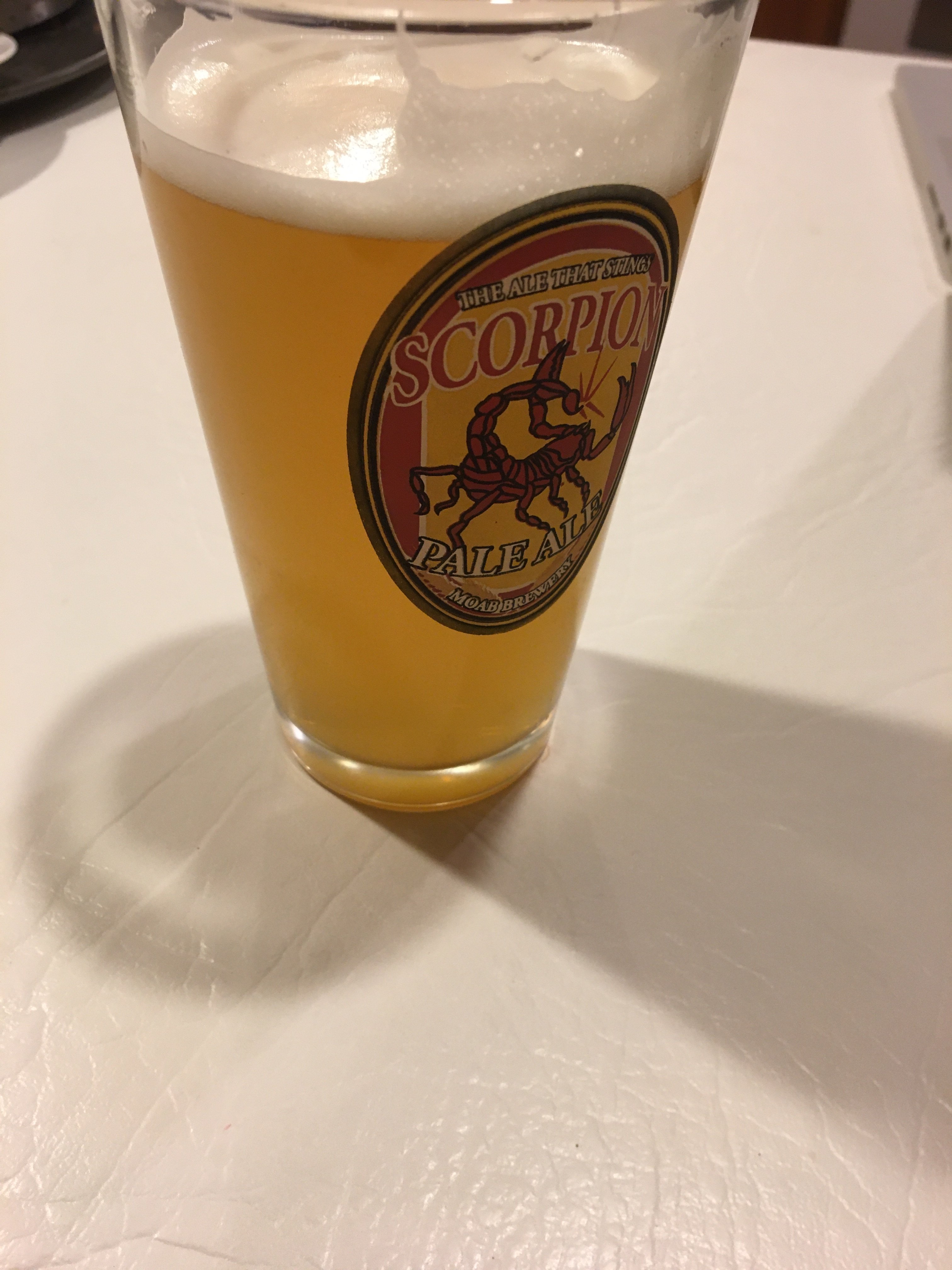yes actually... not to full Co2 levels but close enough.
I think natural carb does help certain characteristics of foam as well.
My experience as well.

yes actually... not to full Co2 levels but close enough.
I think natural carb does help certain characteristics of foam as well.

I figured, but always good to confirm. I can do this with my single infusion beers as well (at least I think I can, going to confirm that tonight lol).

How was the mecca grade? Did you notice a difference in quality over plain old pilsner malt?NZ Pils
No dry hop
Single infusion (148 F)
3% wheat malt, rest base (all mecca grade)
Brewed 2 months ago to the day.
View attachment 670529
How was the mecca grade? Did you notice a difference in quality over plain old pilsner malt?










yes actually... not to full Co2 levels but close enough.
I think natural carb does help certain characteristics of foam as well.
I see that now. If I start the equation by targeting a specific OG, say 1.095 in this case, adding sugar would lower the grain bill and result in a lower FG. If I start the equation by targeting a specific FG adding sugar allows me to get there with less grain.Yea to the corn sugar sorta to the rest. It doesn’t really reduce fg but stops it from being higher. I think it’s better stated as increasing abv without adding fg, whereas adding more grain to do the same increase to og would also increase your fg.
the only way to consider it would decrease fg, is by targeting a certain og, say 1.060. If you did all grain to get there it would likely have a higher fg than if you replace a portion of that grain with dextrose
Trillium has a Cutting Tiles series of NEIPAS that use raw wild flower honey in them and they are great. Maple I personally wouldn’t try but there are options like lactose too if that’s what you’re going forThis brings up another question for me. Some beers use sugar additions specifically to add flavor. Since NEIPA is all about flavor, are there any sugars that might play well? Dextrose should have little or no flavor I think. Maybe honey or maple added at the right time?
I used the mecca opal 22 malt for a brown ale and while this was my first brown ale I felt like the malt from them actually lived up to the description...even at only 1 lb of the grain bill...I am planning on trying the pale ale malt and pilsner malt from them in some n/e's to see how they do and if it makes a noticeable difference...i know malt profile is not what you typically go for in a new england but if it lays a better platform/building block than traditional brands than why not right? I have read good things so was just trying to get some more feedbackWould need a real side by side to be for sure, but I’ve enjoyed all the beers I’ve used it in (Pelton, Lamonta, Shaniko and have Vanora but haven’t used yet). My palate is terrible, so can’t be much more helpful, sorry.
This brings up another question for me. Some beers use sugar additions specifically to add flavor. Since NEIPA is all about flavor, are there any sugars that might play well? Dextrose should have little or no flavor I think. Maybe honey or maple added at the right time?
NZ Pils
No dry hop
Single infusion (148 F)
3% wheat malt, rest base (all mecca grade)
Brewed 2 months ago to the day.
View attachment 670529
That's quite some haze for not adding any oats/wheat, what's the secret?
Very interesting, I'll have to give it a shot! Do you do 20 min for each step?Carafoam and step mashing
What step times and temperatures do you use for NEIPA's? Would like this for my next attempt. Usually just do a single infusion for 90 minutes and 15 minute mash out.Carafoam and step mashing
This brings up another question for me. Some beers use sugar additions specifically to add flavor. Since NEIPA is all about flavor, are there any sugars that might play well? Dextrose should have little or no flavor I think. Maybe honey or maple added at the right time?



I was gonna ask what people are doing to up the ABV on these (Say, 8% range-ish) without effecting color too much? I was thinking of using regular table sugar or dextrose but didn't want to have a lower final gravity. I usually aim for 1.017-1.020.
Warm has always worked better for me for extraction and flavor/aroma. Eliminating fermentation dry hopping and getting the most yeast out of suspension before hand has greatly reduced the hopburn. It’s extremely rare that I get it anymore after doing these two thingsSo, thoughts on Warm vs Cold dry hopping?
For my latest brew, I followed the advice from the recent Janish article and dry hopped cold for 3 days at about 50 degrees. (It was my second dry hop -- the first was at fermentation temps at 3.5 days with a few points left.)
The result is a smooth drinking NEIPA with very little "hop bite" or astringency. HOWEVER, it is also less flavorful/juicy than the ones I brewed that DID have some hop bite/astringency - and were dry hopped at 60 or above.
So how to thread the needle? My guess is that for my system, there is a perfect temperature for that last dry hop. I believe it's below fermentation temp, but probably closer to 60 degrees than 50. Maybe the perfect temp is the one Scott suggested, 58 degrees?
What seems to work best for you?
http://scottjanish.com/a-case-for-short-and-cool-dry-hopping/
So do you soft crash to 58-60 to drop the yeast, then let it warm back up to room temperature before dry hopping?Warm has always worked better for me for extraction and flavor/aroma. Eliminating fermentation dry hopping and getting the most yeast out of suspension before hand has greatly reduced the hopburn. It’s extremely rare that I get it anymore after doing these two things
I crash lower, I go down to 40ish just because it’s easier for me. Then yeah I’ll let it warm back up to 68-70 to dryhopSo do you soft crash to 58-60 to drop the yeast, then let it warm back up to room temperature before dry hopping?
I’ve done this with pretty good success, just curious if this is also how you do it.